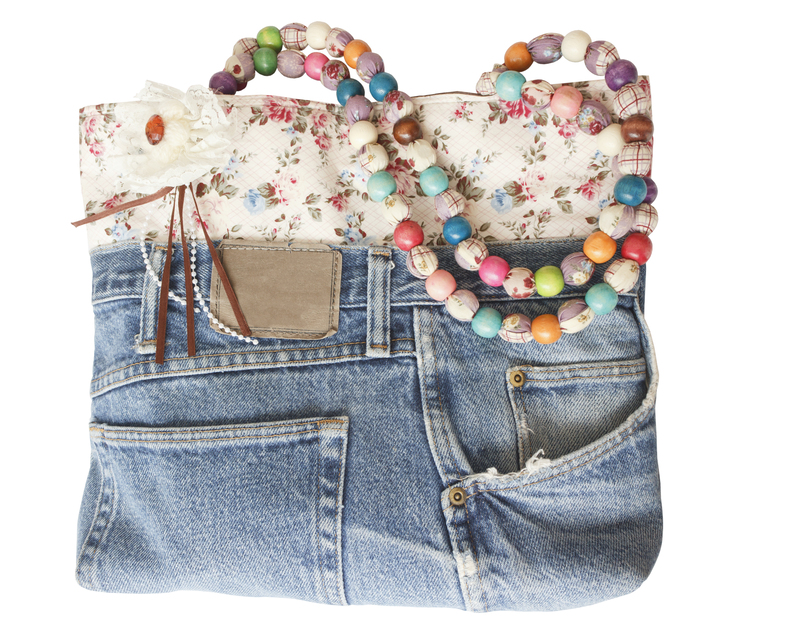How to Safely Bag and Remove PPE Waste in Your Household
In the wake of global health concerns, personal protective equipment (PPE) such as masks, gloves, face shields, and gowns have become part of our everyday lives. While these items are crucial in safeguarding against infectious diseases, they generate a new challenge: household PPE waste disposal. Properly managing this waste not only protects your family but also safeguards sanitation workers and the environment. In this comprehensive guide, you'll learn effective, safe, and environmentally responsible methods for bagging and removing PPE waste from your home.
Why Is Proper PPE Waste Disposal Important?
PPE waste--including single-use masks, disposable gloves, and other barrier equipment--can pose a risk if not handled correctly.
- Potential Disease Transmission: Used PPE may be contaminated with viruses, bacteria, or other pathogens.
- Environmental Impact: Improperly disposed PPE can enter waterways and natural habitats, causing harm to wildlife.
- Worker Safety: Sanitation workers are at risk of exposure if PPE is not correctly segregated and bagged.
It is essential to adopt safe PPE waste removal practices at home to reduce these risks. Let's examine the steps you need to follow for safe and responsible management.

Types of PPE Waste Commonly Generated at Home
To manage PPE waste efficiently, it is important to first recognize what constitutes household PPE waste. Common types include:
- Disposable face masks (surgical masks, KN95, etc.)
- Respirators (N95, FFP2, etc.)
- Latex and nitrile gloves
- Face shields and goggles
- Gowns and disposable protective clothing
- Disposable shoe covers
- Disinfectant wipes and tissues used on faces or hands
What Is Not Considered PPE Waste?
It's important to *not* mix regular household trash or recyclables such as bottles, cans, or paper with PPE waste. Only items used explicitly as personal protective devices or for sanitizing potentially contaminated surfaces should be classified and treated as PPE waste.
Step-by-Step Guide to Safely Bag and Remove PPE Waste in Your Household
Step 1: Dedicate a PPE Waste Bin
Segregation is key. Use a small, lined bin with a lid in a convenient location--preferably near your home's exit or bathroom. This bin should be used exclusively for PPE waste and nothing else.
- Choose a bin with a foot pedal or hand-free lid to minimize contact.
- Keep it clearly labeled: "PPE Waste Only".
- Make sure all household members, including children, know which bin to use.
Step 2: Use the Right Bags for PPE Disposal
For safe removal, always double-bag household PPE waste. The ideal bags to use are:
- Thick, leak-proof plastic bags - Avoid thin grocery bags as they tear easily.
- If available, use brightly colored bags (like red or yellow) to signal hazardous or medical waste; though this is mostly required for public facilities, using colored bags at home can assist in proper identification.
Double-bagging offers extra protection in case the outer layer is compromised and further limits the possibility of contamination.
Step 3: Personal Precautions During Disposal
When you're preparing to bag and remove PPE waste, take these steps:
- Wear disposable gloves each time you handle PPE waste.
- Avoid touching your face or any other surfaces while handling waste.
- If gloves are not available, wash your hands thoroughly with soap and water before and after handling the waste.
- Do not compact or squeeze the waste bags; let them retain some air to reduce risk of rupture.
Step 4: Safely Sealing and Removing PPE Waste Bags
Follow these steps for sealing and preparing the waste for collection:
- Once the waste bag is about three-quarters full, remove it from the bin.
- Tightly tie the inner bag using a secure knot--avoid touching the outside surface.
- Place the tied inner bag into a second (outer) bag and tie it again securely.
- Disinfect the outside of the bag using a household disinfectant spray or wipes.
- Label the outer bag clearly as "PPE Waste" if possible.
*Always avoid overfilling bags* to prevent accidental breaks and spills.
Step 5: Temporary Storage of Bagged PPE Waste
If immediate pickup or disposal is not possible, store the double-bagged PPE waste in a secure area:
- Select a ventilated space away from high-traffic areas and pets.
- Keep the waste bags out of direct sunlight to prevent heat-related breakdown.
- Ensure the storage area is inaccessible to children and animals.
Step 6: Final Disposal of PPE Waste
Households generate significantly less medical-type waste than healthcare facilities, but it still demands proper attention. Here's how to dispose of PPE waste from your household responsibly:
- Check your local guidance: Many municipalities have updated guidelines for handling PPE and medical waste. This may include specific collection days, designated drop-off locations, or instructions for labeling.
- Do not recycle PPE waste: Masks, gloves, wipes, and most PPE items cannot be recycled with regular household recyclables due to contamination and material composition.
- Place sealed bags in general waste bins: If local guidelines do not direct otherwise, deposit double-bagged PPE waste in your regular trash--never in recycling or compost bins.
- Wait time: If someone in the house is ill or quarantined, store the sealed PPE waste for 24-72 hours before moving to the general waste bin, as recommended by several health authorities.
Environmental Impact: How to Reduce PPE Waste at Home
While safe PPE disposal is critical, it's equally important to minimize environmental impact by reducing unnecessary PPE use where possible. Consider these options:
- Switch to reusable masks and face shields whenever possible, following proper cleaning and sterilization protocols.
- Limit glove use to essential situations (e.g., caring for sick individuals); instead, prioritize frequent hand washing.
- Educate your household--especially children--on proper PPE use and disposal.
- Avoid littering PPE items in public places; always bring a spare bag to dispose of waste responsibly while outside the home.
Frequently Asked Questions about Household PPE Waste Removal
Can I Wash and Reuse Disposable PPE Items?
No. Disposable PPE items--like surgical masks and single-use gloves--are designed for one-time use only. Attempting to wash or disinfect for reuse can compromise their integrity and effectiveness.
Should I Dispose of PPE Waste with Regular Trash?
Generally, yes, but always double-bag PPE waste and follow any special instructions provided by your local authorities regarding waste segregation.
Is It Safe to Burn PPE Waste in the Household?
Never burn PPE waste at home. Burning these items releases toxic chemicals and poses severe environmental and health hazards.
How Should I Protect Sanitation Workers?
Always double-bag and label PPE waste clearly. Never dispose of sharp objects like needles or broken face shields with household waste--consult your local authorities for special arrangements for sharp or hazardous items.

Tips for Educating Your Household about Safe PPE Disposal
Ensuring everyone in your home understands the importance of *safe PPE waste handling* is key to success. Try the following:
- Hold a family meeting to discuss how and why to separate PPE waste.
- Post diagrams or simple instructions near PPE disposal bins, especially in shared living spaces.
- Lead by example--always dispose of your own PPE appropriately and encourage others to do the same.
Conclusion: Keep Your Home and Community Safe
Properly bagging and removing PPE waste in your household is crucial for safety, public health, and the environment. By following the steps outlined above--including dedicated bins, double-bagging, safe removal, and adherence to local disposal regulations--you can minimize risks and do your part in keeping your community clean.
For ongoing updates or guidance, always refer to advice from your local health department or waste management authority. By making safe PPE disposal a regular habit in your household, you'll not only protect your family but also help prevent environmental pollution and safeguard our sanitation workers.
Stay responsible, stay safe--and encourage others to follow these best practices for household PPE waste disposal.
